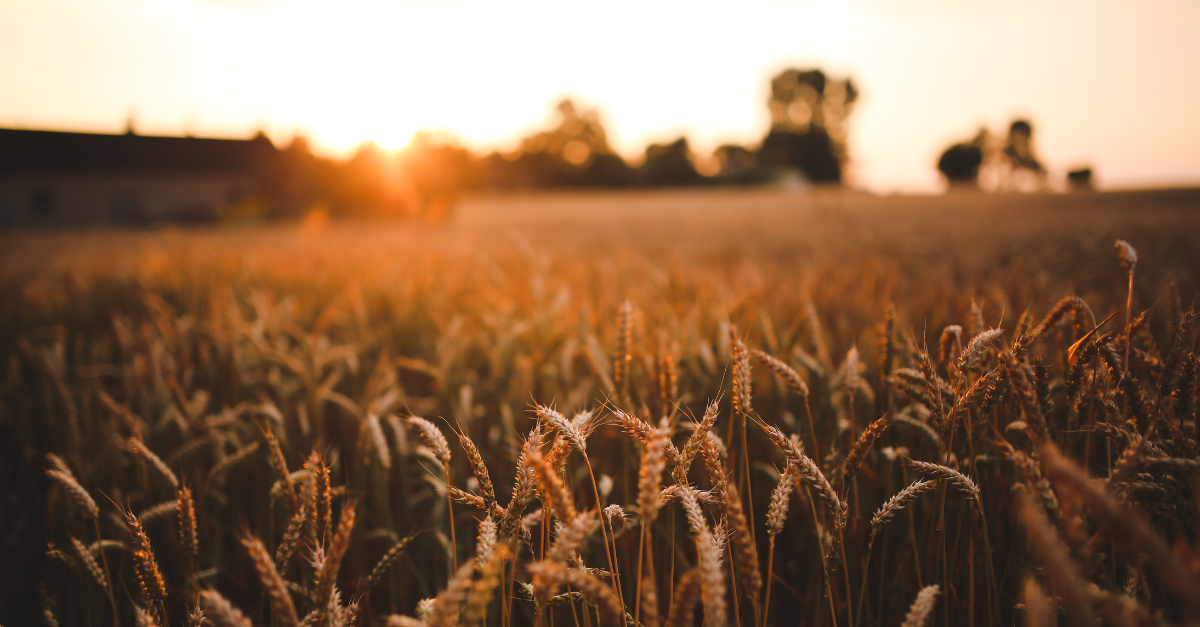
The agricultural ecosystem is heavily entwined with the State’s economy, infrastructure, water, and natural resources. Nearly half of Colorado’s land area is used for agricultural production that supplies food, fiber, and energy products. Colorado's farmers, ranchers, and food processors grow, process, and market over $15 billion in products each year throughout Colorado, nationwide, and to over 115 countries around the world.
While drought and weather variability intensified by climate change, as well as an aging workforce, pose significant challenges to Colorado’s agriculture industry, farmers and ranchers remain key players in progressing the State’s climate goals. Innovative farm and ranch management practices can lead to reduction in greenhouse gas emissions, increased carbon sequestration, and increased climate resilience for the State, as well as many important co-benefits. Climate smart agricultural production also increases food security, supports rural economies, and increases biodiversity.
The Colorado Department of Agriculture and its Agricultural Drought and Climate Resilience Office (ADCRO) works closely with farmers, ranchers, commodity groups, state and local agencies, including DOLA’s Colorado Resiliency Office (CRO), to increase the ability of the agriculture community to anticipate, prepare for, mitigate, adapt to, and respond to hazardous events and trends related to drought and climate through voluntary technical assistance, non-regulatory programs, and incentives.
Did You Know?
Cultivating Colorado’s statewide and local food system is one of the six priorities established in the Colorado Resiliency Framework (CRF), a statewide roadmap maintained by DOLA’s Colorado Resiliency Office that lays out strategies to reduce risk and vulnerabilities and to adapt to changing environmental, social, and economic conditions. This priority focuses on providing flexibility and tools to analyze and adapt to local needs and conditions using the following strategies. Below are progress highlights for the CRF Agriculture and Food Security priority area.
Strategy 1: Promote and protect working lands by providing incentives for local land use conservation as well as policies and activities that promote multiple benefits of land and resource conservation; prioritize policies and activities that will preserve farms and ranches for food production.
- ADCRO drives policy and supports programming that strengthens Colorado’s producers’ ability to mitigate and respond to drought and a changing climate. The CDA’s Colorado State Conservation Board offers a variety of training, technical assistance, funding programs for agricultural producers and conservation districts throughout the state.
Strategy 2: Advance regenerative farming practices. Establish frameworks and systems for regenerative farming across different scales that employ market-based solutions and produce multiple benefits, including improving soil health, conserving water, and empowering Black, Indigenous, and People of Color (BIPOC) landowners and agricultural producers.
- Working in partnership with Colorado’s Conservation Districts and Grower Groups, the Colorado Soil Health Program provides financial and technical assistance to producers to evaluate and implement resources or practices to improve soil quality. The Colorado Soil Health Program is open to all conservation districts in good standing. The Colorado Soil Health Program facilitates capacity building by providing matching state funds towards the cost of these projects and activities within each district. Interested districts should contact CSHP.
Strategy 3: Support innovations & new markets. Advance and promote innovations in the use of forest products that support sustainable and resilient agricultural activities, including the use of biochar, agricultural composting, and processing of agricultural waste.
- Agrivoltaics, the practice of farming or ranching under or alongside solar panels, has the potential to help farmers adapt to climate change and diversify their income through land lease payments or other business structures. Through Senate Bill 23-092, the Colorado Colorado Department of Agriculture’s rolling agrivoltaics grant supports Colorado producers and helps progress Colorado’s clean energy transition. These grants fund “new or ongoing demonstration or research projects to study the potential, benefits, and tradeoffs of agrivoltaics in the state." In addition to farmers, ranchers, and research institutions, this grant is open to local governments.
- The Advancing Colorado’s Renewable Energy and Energy Efficiency (ACRE3) program promotes the development and implementation of renewable energy and energy efficiency projects for Colorado’s agricultural producers and processors by providing financial and technical assistance and education to help agricultural producers and processors cut energy costs, develop their own energy resources, and create markets for agriculturally derived energy and fuels.
Strategy 4: Bolster next-generation farm and agriculture workers. Invest in the next generation of farmers, ranchers, and food producers, with a focus on BIPOC community members. Provide internships, skills-based pieces of training, and mentorship programs to build equitable workforce development. Diversify economic opportunities through technical and financial assistance to support shifting to low-water crops, entering new market opportunities, and expanding agrotourism.
- The CDA offers the Agricultural Worker Services Program, the Agricultural Workforce Development Program, Beginning Farmer Program to offer training, incentives, and resources to grow the agricultural workforce.
Strategy 5: Integrating local agriculture and food system considerations into community planning activities to support community food gardens, urban agriculture, consolidated farmers markets, and food pantries that provide equitable healthy food access and security. Identify opportunities to further economic development and natural resource objectives.
- The Montezuma Orchard Restoration Project (MORP) works to preserve Colorado’s fruit- growing heritage and restore an orchard culture and economy to the southwestern region. The project partnered with The Nature Conservancy to ensure that they were bringing back orchards using the most water efficient practices. MORP is working to increase agritourism in the area and create economic development opportunities for people with orchards by providing access to value-added agriculture resources like mobile juice servicing business.
Dive Deeper
The five strategies identified in the Colorado Resiliency Framework also align with the Strategic Plan for Climate-Smart Natural and Working Lands developed by the Department of Natural Resources, the Department of Agriculture, the Colorado State Forest Service, and the Colorado Natural Heritage Program. This Strategic Plan identifies priority actions across Colorado’s landscapes to reduce emissions, increase carbon sequestration, and create a climate resilient Colorado.